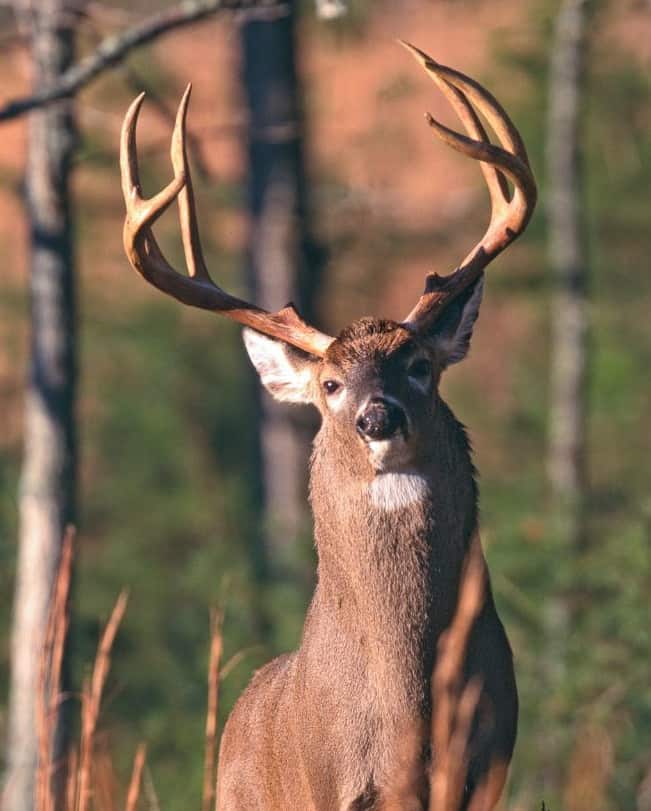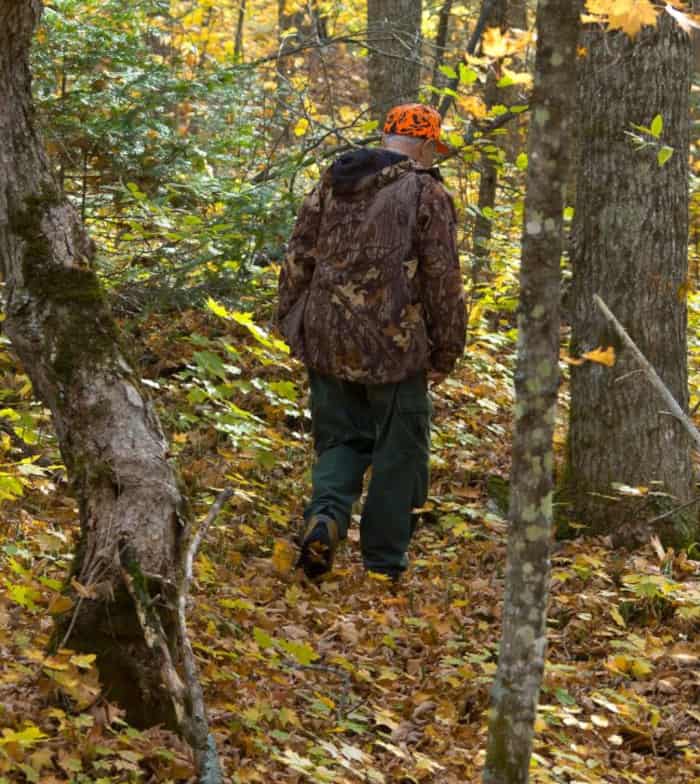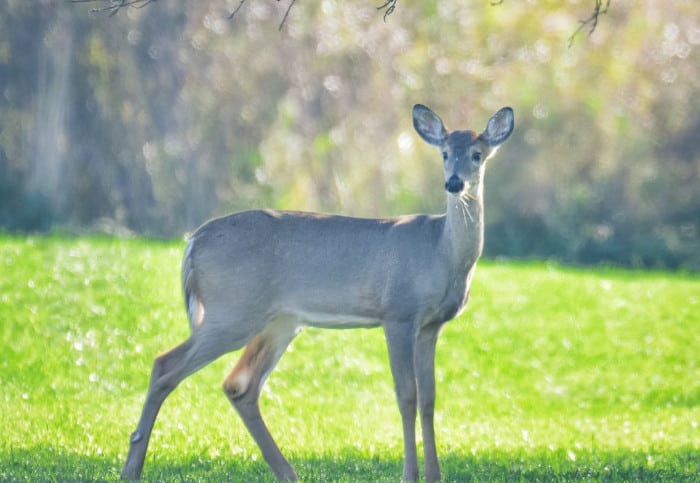At my day job, I spend a great deal of time answering questions about all kinds of hunting gear, tactics, and techniques. Given the incredible popularity of whitetail deer, it’s probably no surprise that I spend most of my time discussing various aspects of deer hunting. One question that seems to pop up every now and then has to do with the amount of land required to hunt deer. The actual question is typically in this format: how many acres do you need to hunt deer?
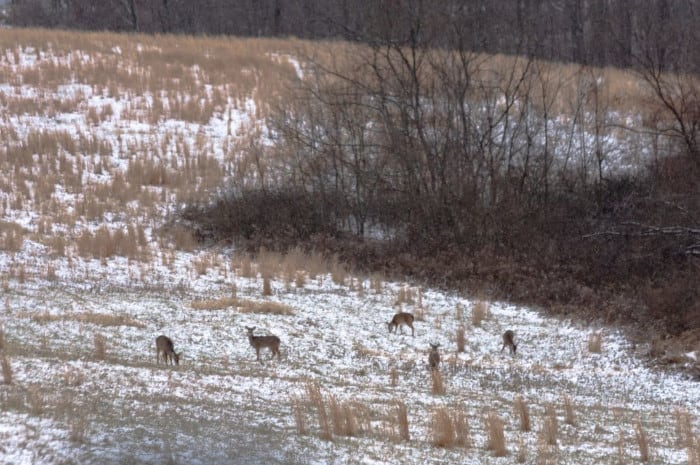
When it comes to ideal property size, there is no one-size-fits-all answer. I’ve harvested deer on tracts of land that range from 10 acres up to larger leases of 1,000 acres or more.
One of the most successful tracts I hunt is less than 20 acres, but it happens to be located adjacent to a large farm with rotating crops of corn, soybeans, and wheat. The deer use the smaller 20-acre tract I hunt as a bedding location, as the area of loaded with thickets and thick cover.
Key Takeaways
– Successful whitetail hunting can be achieved on both small and large properties.
– The size of the property affects hunting approaches and tactics.
– Small properties require finding the right location and good habitat, while large properties may offer everything a whitetail needs.
– Typically, larger tracts offer better hunting opportunities.
What is the Optimal Property Size for Hunting Whitetail Deer?
Again, I’m not convinced that an actual optimal acreage exists because deer are killed every year on hunting properties and farms of all sizes. That being said, there are several factors I look at when evaluating the quality and size of a hunting lease, including:
Available Acreage
Acreage is potentially significant, but there are other factors to consider as well. The benefit of larger tracts is the potential for diverse habitats (thickets, swampy areas, hardwood areas, etc.) coupled with the larger hunting space should the deer change behaviors or feeding patterns.
Larger acreage also provides the opportunity for more food plots and can typically support a larger deer population compared to a smaller piece of land.
However, bigger tracts of land also come with some potential downsides, such as:
- More expensive lease costs
- Higher taxes (assuming you’re also paying the property taxes)
- More land to post (if necessary)
- More land to “police” from trespassers and other hunters
Habitat Quality
The quality of the whitetail habitat is a major factor for me, especially if I’m paying to hunt. If I’m permitted to hunt, then it’s not as important because I have less out of pocket expenses.
When I’m considering land for hunting deer and evaluating the habitat, I’m looking for the following habitat features:
- Hardwood trees (for the mast crop)
- A water source.
- Potential bedding areas (thick cover, pine thickets, briar patches, etc.)
- The proximity of food sources (especially winter food sources)
- The proximity of other nearby leased hunting land

Here are some things that concern me when I’m looking at habitat:
Extensive Timbering
Many landowners will sell the timber on a property when they need or want cash, especially when wood prices are high. Timber companies come in, cut down the agreed-upon timber (which is usually hardwood trees), and then haul it off to the mill.
Most timber companies either leave the timbered area as is, which will grow back into a thick cutover, or replant the harvested area with pine trees because pines are cheap and grow back faster than hardwood trees.
Either way, the potential result is a piece of property without a healthy population of hardwood trees. Those hardwoods produce various species of nuts that are an essential food source for deer. Without those nuts (typically called the “mast crop”) as a food source, the local deer population has to find alternate food sources for fall and winter.
If you don’t provide those alternate food sources (through food plots or feeders), the deer will travel to areas with good food sources. Ideally, you would prefer to keep them on or around your leased land versus having them migrate to better food sources.
Honestly, I’m not a huge fan of leasing land where the trees have been harvested. For example, if you gave me a choice between leasing a 50-acre tract of land with marginal habitat or a 200-acre tract where 100 acres had been timbered, I’d rather lease the smaller 50-acre tract. While timbering produces lots of cover and bedding areas, it decimates the mast crop.
Little to no natural bedding locations
Deer need bedding areas where they feel safe to rest and sleep. The ideal bedding areas are areas of thicker cover where the whitetails can hide and hear or smell danger approaching.
Although bedding areas can be artificially manufactured through various methods (hinge cutting, strategically cutting down large trees (preferably dead or dying ones) to create cover, etc.), the ideal ones occur naturally.
As I’m evaluating a property, the quality of the habitat is almost as important as the property’s overall size.
Nearby natural or man-made food sources
I’m also looking at the natural and man-made food sources located on a property that will be available in the fall and winter. Spring and summer food sources are easy for whitetails to locate, but late fall and winter are an entirely different situation.
Some examples of natural food sources I look for include:
- Mast crop (or the potential for a good mast crop) – Acorns are the top target for deer, but hickory, walnut, and pecans are also deer favorites.
- Honeysuckles or blackberry bushes – Not only do they offer a food source but bedding cover as well.
- White cedar or Hemlock trees
- Natural persimmon trees
- Pokeweed
- Ragweed
Some man-made food sources I look for on a property include:
- Fruit trees (apples, oranges, peaches, etc.)
- Agricultural crops like corn, soybeans, peanuts, etc.
The number of late season food sources on a property will determine if it will be necessary to set up a supplemental feeding program (which typically consists of deer feeders or food plots).
If I’m going to be the only person hunting a property, my optimal property size is in the 50-100 acre range. A tract of land that size with good habitat is more than enough for a solo hunter and might even be able to support two hunters. A 100-acre tract typically offers enough space to set up multiple food plots (if needed) and the opportunity to hunt different scenarios.
If the number of hunters increases, then I suggest increasing the size of the land tract accordingly. Otherwise, you’ll end up with situations where hunters are hunting on top of each other or competing for the best spots.
That being said, I still wouldn’t recommend arbitrarily passing up on a smaller tract of land just based on the acreage. As I mentioned before, I’ve had some excellent success hunting on small tracts in the 25 to 50 acre range.
Additionally, the size of the property should allow for the implementation of successful hunting strategies. This may include creating bedding areas, establishing travel corridors, and setting up stands or blinds in strategic locations.
Advantages of Larger Properties
Some advantages of a larger deer hunting property include the potential for more aggressive tactics, greater flexibility in dealing with wind conditions, and a wider margin for error if you make a mistake.
Larger-size properties offer greater flexibility in dealing with adverse wind conditions because hunters can strategically position themselves in areas where the wind is favorable, increasing their chances of success.
Also, larger tracts of land provide a wider margin for error. Even if you make a mistake, there is still ample space to set up a new stand. This opportunity to relocate a stand can alleviate some of the pressure on hunters and increase their overall success rate.
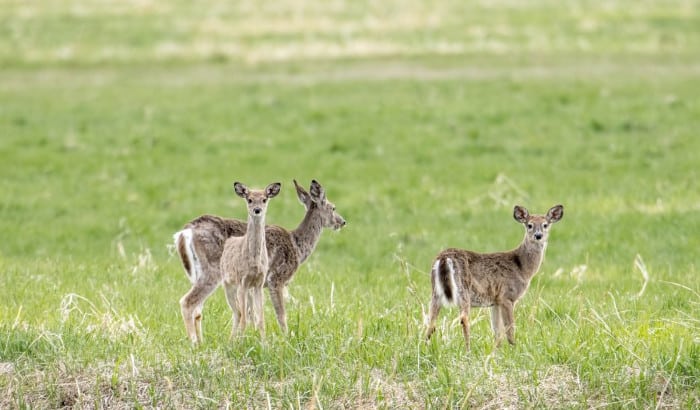
Frequently Asked Questions
Here are some frequently asked questions pertaining to the ideal acreage for hunting whitetails:
How many acres do you need to hunt deer?
The amount of land you need to hunt deer depends on various factors, including the habitat type, deer density per acre, and hunting pressure in the area. Generally, most whitetail hunting experts recommend having at least 25 acres of land for hunting deer, but if you want to have a more comfortable hunting experience and attract more deer, a larger hunting property of 50 or more acres or more would be ideal.
Can you hunt deer on small acreage?
Yes, you can certainly hunt deer on small acreage and be very successful. While it may be more challenging due to limited space and attracting deer, you can still have a successful hunt on as little as 10 acres of land with proper habitat management and strategic hunting techniques. However, keep in mind that larger properties generally provide better hunting opportunities.
Do I need to buy land to hunt deer?
The average deer hunter can’t afford to purchase land specifically for hunting purposes, so most hunters focus on hunting public land, leasing hunting properties, or seek permission to hunt on private land. These options provide opportunities to hunt deer without the need to purchase hunting property. However, there is something to be said about owning your own land, as it gives you more control over the hunting environment and allows for long-term habitat management.
How many acres of land do deer like?
Deer prefer areas with diverse habitats that provide food, cover, and water. The amount of acreage that deer like can vary depending on the region and available resources. Generally, deer tend to thrive in areas with more extensive tracts of land, such as 40 acres or more. However, they can still be found in smaller habitats if the necessities are met.
How much acreage is required to keep deer on your land?
The amount of acreage required to keep deer on your land depends on several factors, including the quality and availability of food, cover, and water sources. While it is possible to attract and keep deer on as little as 10 acres of land, having larger land tracts with abundant resources increases the chances of deer staying on your land throughout the year.
Can I hunt deer on public land?
Yes, you can hunt deer on public land in many areas. Public hunting lands are available in various states, allowing hunters to access deer hunting opportunities without owning private land. However, remember that public land may have higher hunting pressure and limited control over the hunting environment.

Born and raised in Indiana, Brantley spent his youth chasing deer and turkey and, along the way, developed a passion for bowhunting. Although he still enjoys other types of hunting, his true passion is bowhunting, and he has or will author most all the bowhunting content on this site. Outside of work, Brantley is married and the father of two beautiful little girls. Brantley has worked in the hunting industry, with an emphasis on archery and bowhunting, for more than ten years.



